TV pundit Chris Goffey was right: the Vauxhall Calibra was an “absolutely stunning” car. It still is. Thirty-three years on from Goffey’s Top Gear review of Vauxhall’s four-seat coupé, the Calibra looks better than ever. Indeed, it has probably aged better than most other coupés of the 1990s.
We’d forgive you for spending the next few minutes staring at the main image. It’s probably a while since you saw a Calibra, because rust has seen off far too many of the 40,000 or so that were sold in the UK. This, coupled with something of an image crisis, meant that many were either left to rot or deemed unworthy of essential maintenance; we lost approximately 185 Calibras to the 2009 scrappage scheme alone.

Two decades ago, the Calibra was considered an embarrassment in some quarters. In November 2003, Richard Hammond told Top Gear viewers that the Volkswagen Corrado was “the only nineties coupé that isn’t completely embarrassing”, going on to ask, “what message are you sending the world when you’re seen climbing out of a Calibra?”
In 2023, the message would be unequivocally positive. Your biggest challenge will be finding one, but we’ll come back to that in a moment.
We’ll have to second-guess the reasons why Hammond didn’t feel comfortable driving a Calibra. It’ll have been the common tropes about the Vauxhall badge, the car’s Cavalier underpinnings and the fact that the dynamics never quite lived up to the promise of the aesthetics. All a far cry from when Goffey said the styling “was going to do wonders for Vauxhall’s image”.
The Calibra project, under the internal code of 2670, was given the green light in July 1987, just as Ford was preparing to wave goodbye to the Capri. Ford reckoned the coupé market was drying up, but General Motors begged to differ, with its research indicating that the first year’s production of 30,000 wouldn’t be close to meeting the expected demand. A total of 238,164 Opel and Vauxhall Calibras had been built by the end of production in August 1997 (sales continued until the middle of 1998).
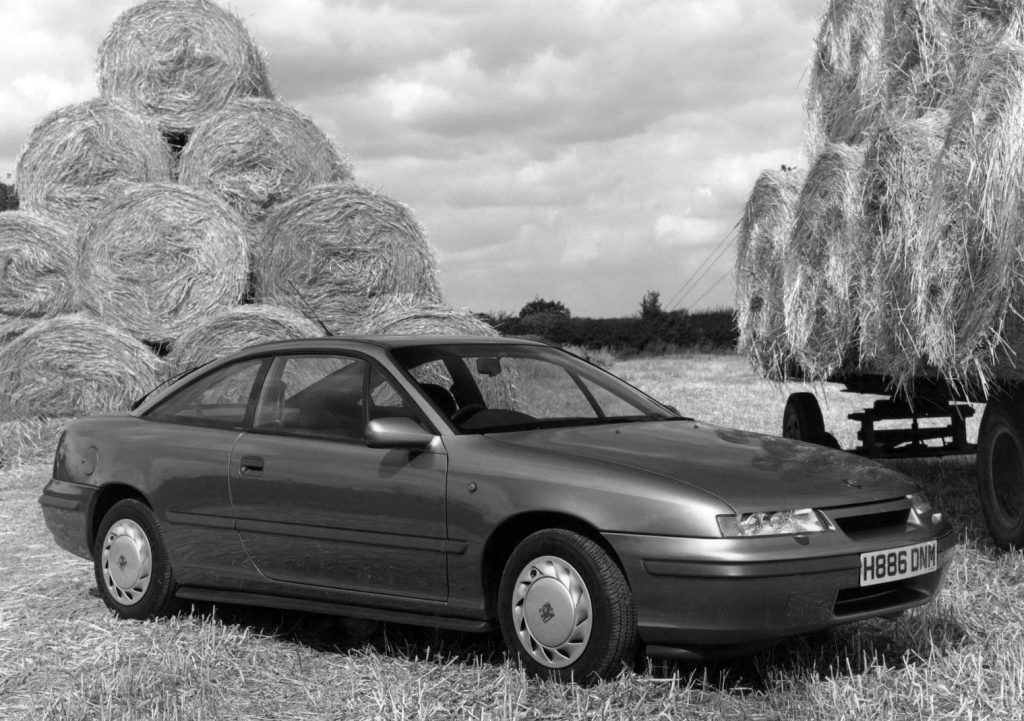
You don’t need to, ahem, probe Ford’s prediction to know that GM was right, and Uncle Henry was wrong. The 1990s was a boom decade for the coupé, with most mainstream manufacturers building a style-over-substance car of some description. Ford built three, one of which turned out to be a ‘driver’s dream’.
Back to the Calibra. An article in Autocar & Motor (30 August, 1989) says the car was the result of an order from Jack Smith, the former boss of Opel, who wanted to convince GM president Jim MacDonald that a sleek coupé was both possible and desirable. The car was designed by Erhard Schnell, under the direction of Wayne Cherry, in just one week, albeit based on a wheelbase 3.1 inches shorter than the Mk3 Cavalier.
Schnell, who also penned the Opel GT, said the Calibra was his “favourite car” and he enjoyed “complete freedom with the styling”. Cost reasons meant that the Calibra was based on a standard Cavalier floorplan, which is something Schnell had to live with. In an interview with Autocar & Motor, he said: “I noticed the difference in proportions two years ago, but now I’ve forgotten about it. It doesn’t seem important. Nobody who sees the car for the first time notices how far it is from the rear of the door to the wheelarch.”
The German designer, who died in February 2020, was less willing to accept other compromises. He insisted on frameless doors, slim pillars and a flowing roofline, and even worked with Hella to develop ultra-slim headlight units. Just 70mm high, the units featured high and low-beam, fog lights and turn signals. They also assisted with the car’s famous aerodynamics.
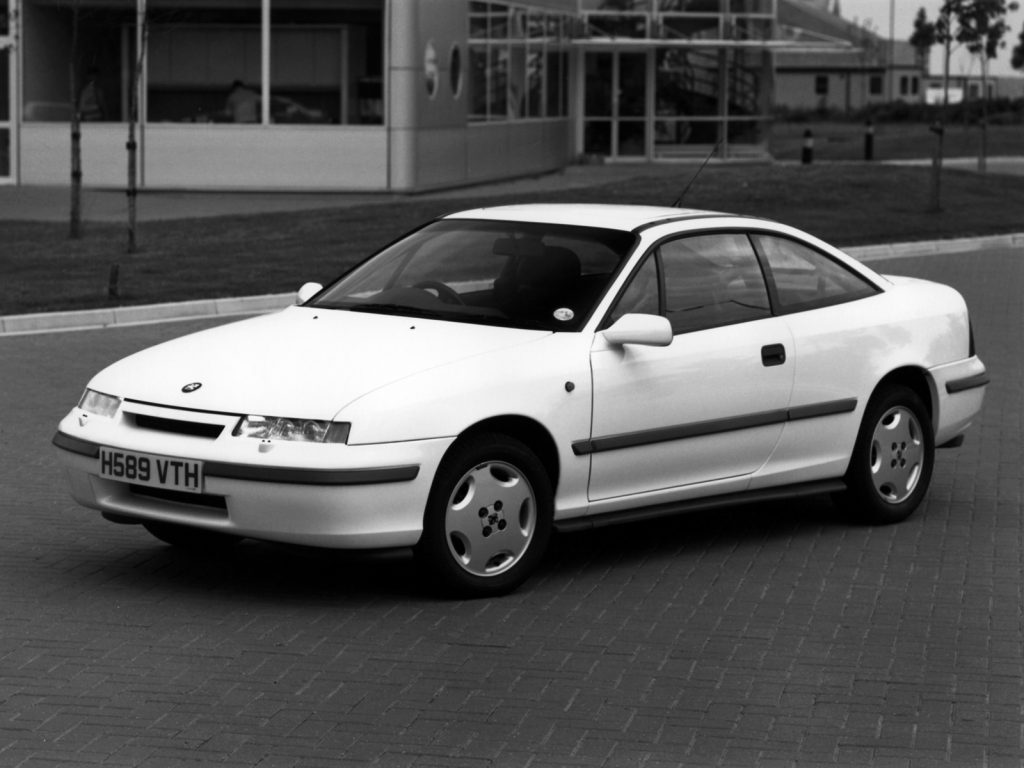
It was, claimed its maker at the time, the most aerodynamic production car in the world, a status it held until 1999 with the arrival of the Audi A2 and Honda Insight. To the achieve the record drag coefficient of 0.26 Cd, the Calibra spent hundreds of hours in the wind tunnel, with the aerodynamics team leaving no stone unturned in the pursuit of aerodynamic excellence. Sure, only the 8v model could claim the headline figure – at 0.29 Cd, the others were identical to the Cavalier – but that’s an impressive drop from the 0.33 Cd of the early one-fifth scale model. Goffey was not amused, saying: “It’s an example of the sort of artistic license that gets the marketing men a bad name – and for which car manufacturers are notorious”.
He may have had a point, but his comment about the 16v version having an inferior figure due to a larger opening in the grille overlooks the smaller (14-inch) wheels and flush wheel covers of the 8v model as the other contributing factors.
The Autocar & Motor feature provided a fascinating insight into how Opel’s ‘aerodynamic guru’ Hans-Joachim Emmelmann and his team achieved slippery credentials. He said: “Everybody expects the front end to give the most improvement but the biggest potential is at the rear. Tapering the tail gave us 50 per cent of the improvement, 15 per cent came from the nose, and the rest from work on the underbody, bumpers and sills.”
His analysis reveals how the success was due to tiny details, rather than a single advancement in design. Merging the shape of the petrol tank into the rear bumper delivered an improvement of 0.005; the integrated front spoiler produced a saving of 0.01; while new side panels, approved by management just months before the car’s launch, delivered a further 0.005. Upgrading from the 8v’s 14-inch steel wheels to the 15-inch alloys of the 16v model added 0.009 Cd to the drag coefficient.
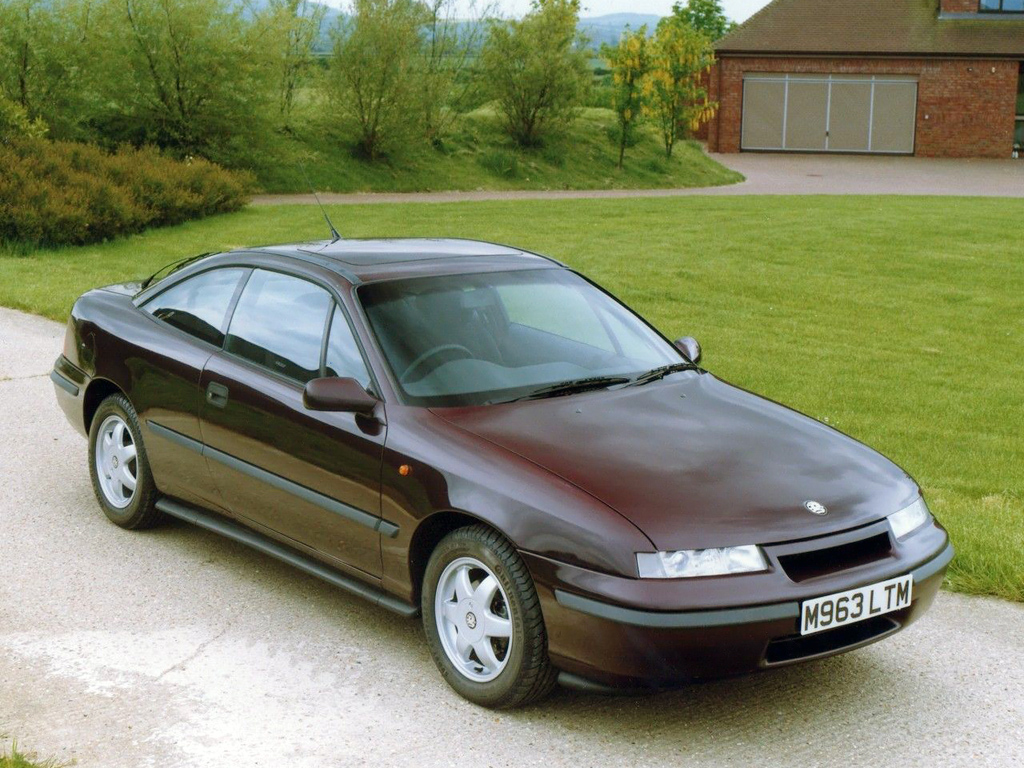
According to production figures lifted from the excellent Vauxpedia website, the 2-litre 8v was the most popular Calibra, accounting for around 54 per cent of total Vauxhall/Opel sales, although one suspects this was down to reasons of cost and not the bragging rights of owning the world’s most aerodynamic production car. In a retrospective look at the 8v model, Top Gear was quite sniffy about the base model, but Autocar & Motor was more positive in its appraisal. Concluding a 1990 road test, it called the 8v ‘a more honest and pleasing car’ than the 16v. ‘It is slower, but makes up much of this deficit by using its torque to keep pace. And it misses out on the torque steer and wheelspin of the 16v car. It handles and rides better, uses much less fuel and costs £2500 less despite having an identical equipment specification bar a set of alloy wheels.
‘We cannot recommend it as a sports coupé – it’s too slow-witted. But as an ultra-stylish car with a genuine family side to its accommodation, the Calibra 2.0i is untouchable for the price.’
Engines weren’t the Calibra’s problem. The 2.0i 16v produced 150bhp and was used to great effect in the contemporary Astra GTE and Cavalier GSi. It sounded brilliant and could propel the aerodynamic wonder to 60mph in just 8.1 seconds before hitting a top speed of 137mph. The 2.5-litre V6 and 2-litre Turbo were even quicker, with the 16v and Turbo models available with four-wheel drive. In Turbo 4×4 guise, the Calibra was good for 152mph and a 0-60 time of 6.4 seconds. Autocar & Motor called the Calibra ‘one of the sexiest-looking cars on earth’ that drove ‘with all the knee-trembling charisma of a Vauxhall Cavalier’.
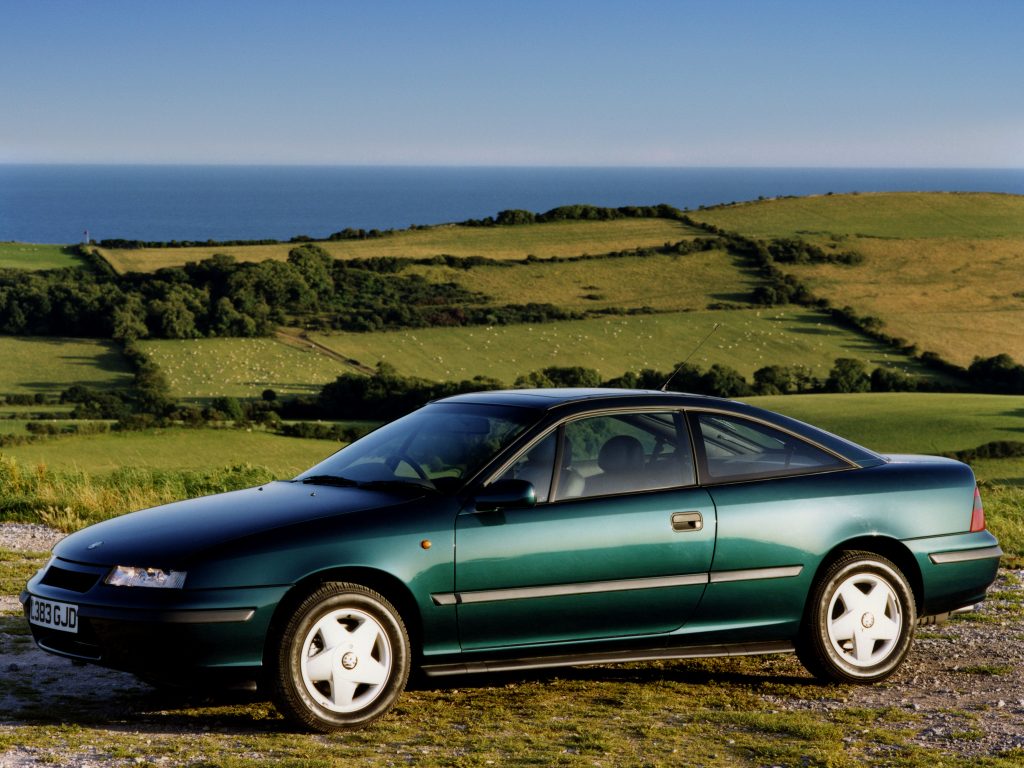
The Calibra was always held back by the Cavalier, both metaphorically and literally. Things could have been different had Schnell got his way with a shorter wheelbase, but that would have robbed the Calibra of one of its USPs: interior space. In a world of 2+2 coupés, the Calibra was a genuine four-seater, with more equipment as standard than you could shake a teardrop-shaped stick at. Electric windows, mirrors and sunroof, power steering, ABS and central locking were all fitted as standard. All UK cars also came with a catalyst, which robbed the engines of power in the name of cleaner air. Not that performance is a factor when you’re staring at the reflection of your car as you glide past the shop windows of a high street.
Special editions included the Tickford, DTM and Turbo Limited Edition, along with SE models numbered from 1 to 9. The UK missed out on some of the Opel specials, including the Color Edition, Keke Rosberg, Cliff and Last Edition. As the name suggests, the Last Edition was the final special edition, with sales limited to German customers. Just 984 were made, each one with bespoke front bumpers and side mouldings, 16-inch BBS RX alloys and suspension lowered by Irmscher.
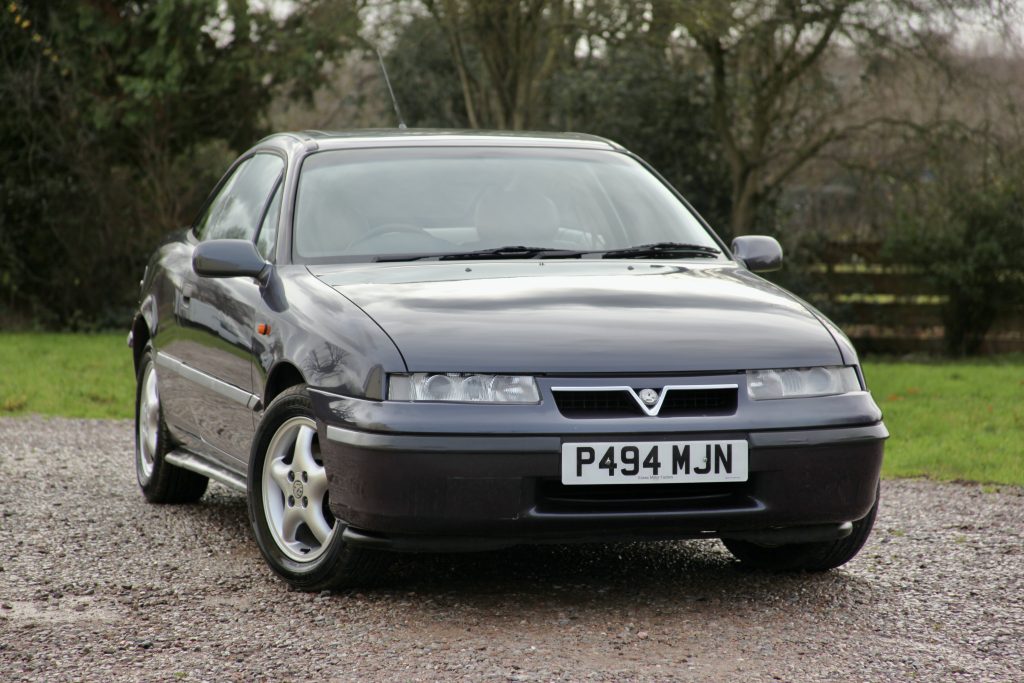
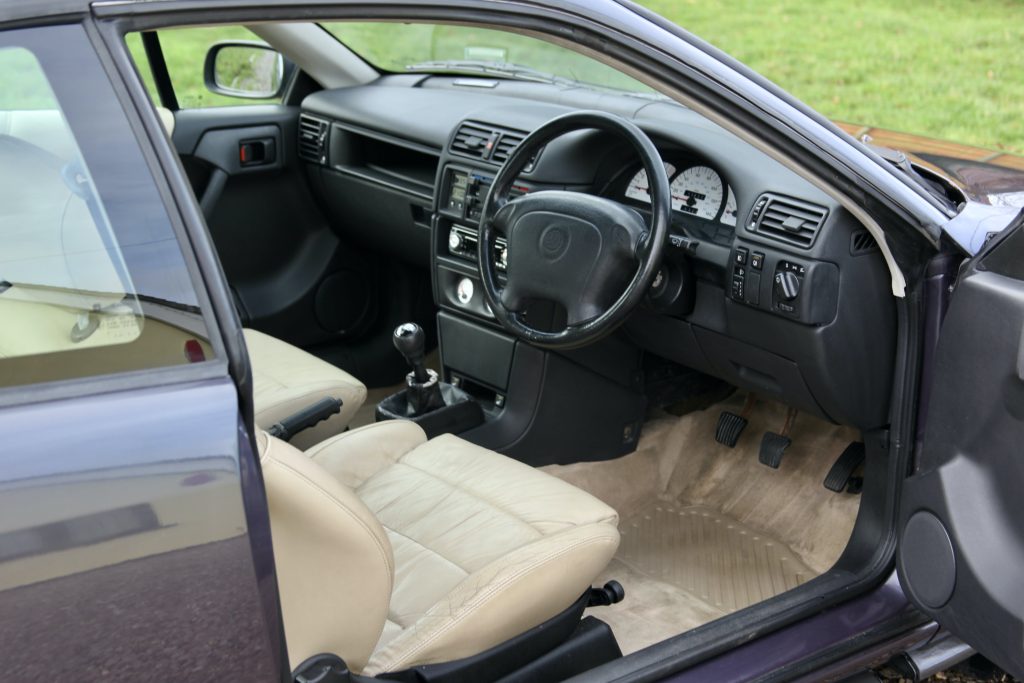
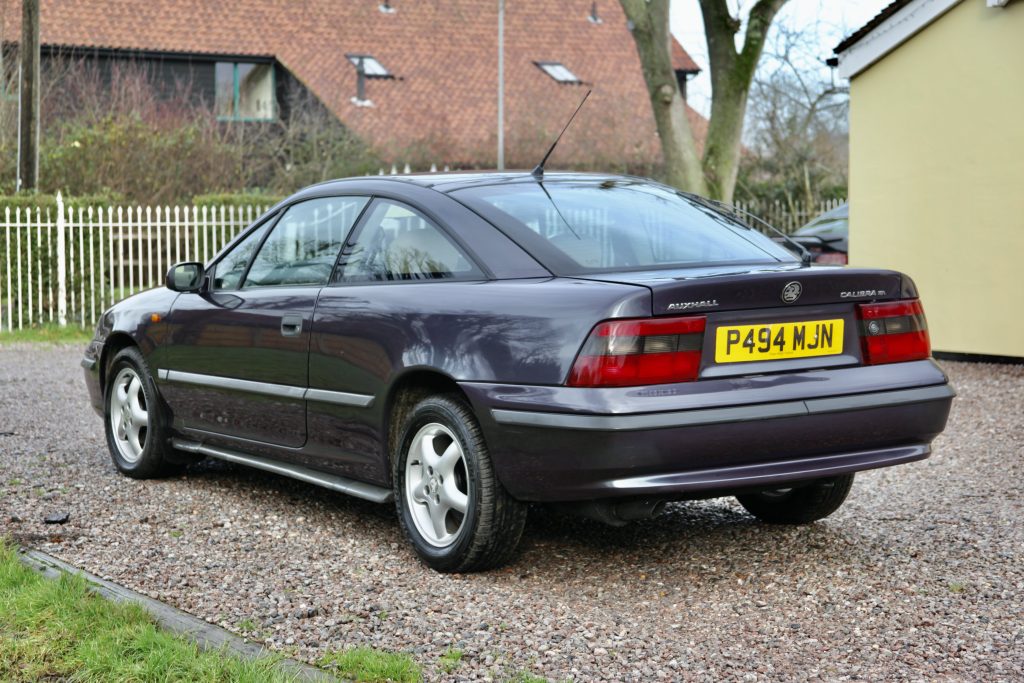
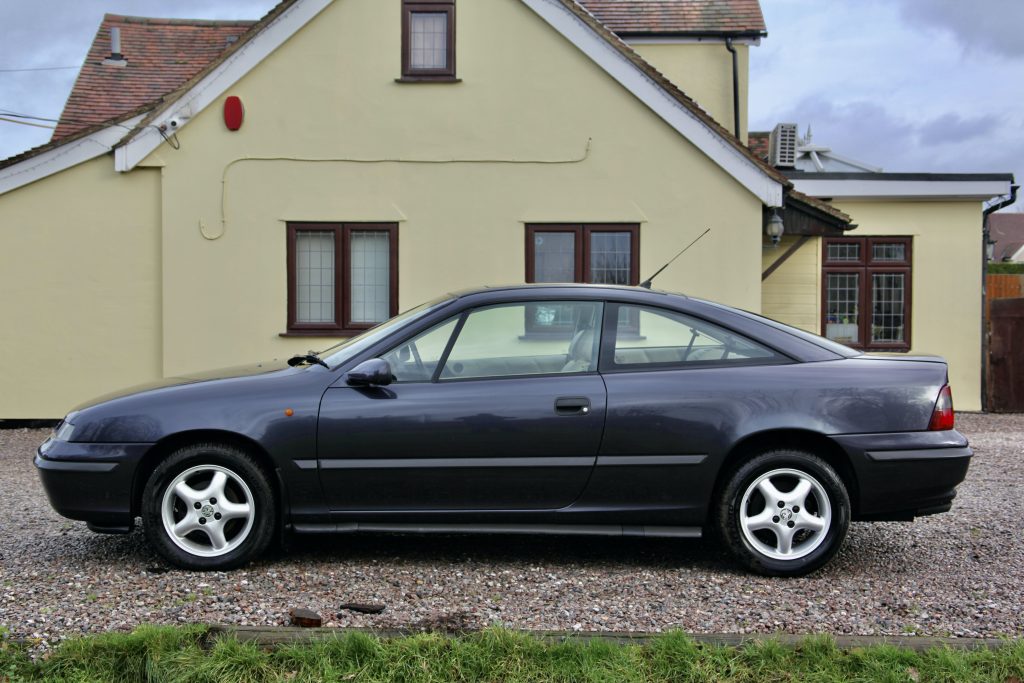
Which means although this 1997 model advertised on Car & Classic might be one of the last Calibras to roll off the production line – it was registered in January 1997 – it’s not a Last Edition as described. It’s actually an SE7, which featured two-coat pearlescent paint, cream leather interior, heated front seats, air con, five-spoke alloy wheels and low-profile tyres. Just 33 were built from September to December 1996.
According to the auction description, the metallic paint “switches between blue, mauve and grey depending on sunlight”, and you have to say that the ‘North Cape’ hue does a fantastic job of showing the Calibra’s svelte styling. The jury is out on the post-facelift grille; would it be wrong to retrofit an original? One thing’s for sure: we wouldn’t be embarrassed to climb out of this Calibra.
Read more
Friends reunited: Testing cars in the ’80s and ’90s was one part fun, two parts frightening
Don’t drag me down: 10 cars that mastered aerodynamics
Early quirks made these 9 classic cars the holy grail of collectors








Rare Hagerty getting it wrong. It’s not a SE7, it’s a standard Calibra 16v Ecotec in the Northcape colour. Another problem found is that they sold 489 SE7’s in Magic Grey between October 1996 – July 1998 with most selling in 1997.